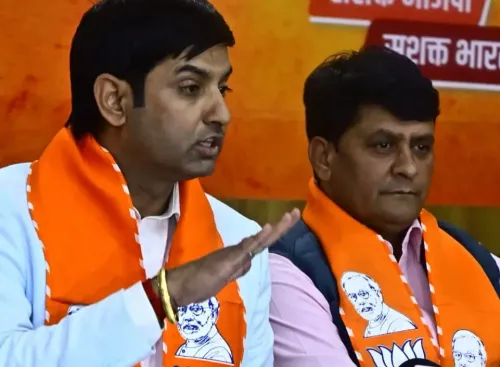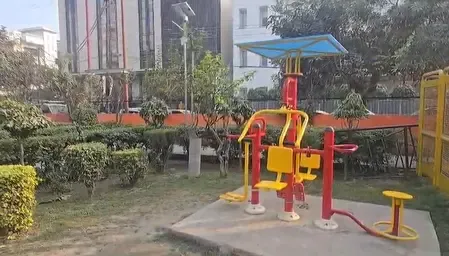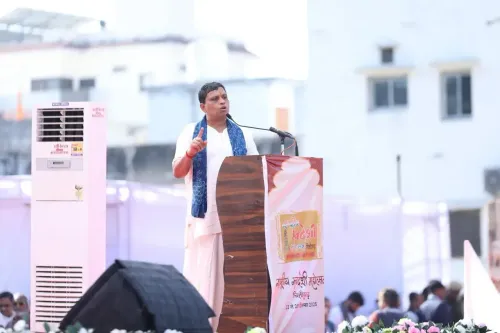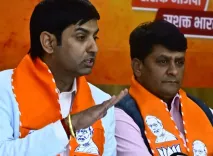How Did the Four-day Chhath Puja Conclude with 'Usha Arghya' Across India?
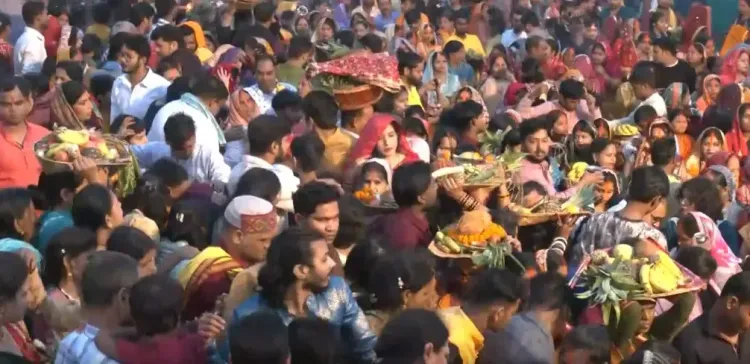
Synopsis
Key Takeaways
- Chhath Puja is a festival dedicated to Lord Surya and Chhathi Maiya.
- The festival concludes with Usha Arghya, symbolizing gratitude.
- Devotees participate in rituals across various cities in India.
- Safety measures were implemented during the celebrations.
- The festival promotes unity and community spirit.
New Delhi, Oct 28 (NationPress) The four-day celebration of Chhath Puja wrapped up on Tuesday with the Usha Arghya, as devotees nationwide offered sincere prayers to Lord Surya and Chhathi Maiya, marking the conclusion of one of the most disciplined and spiritually enriching events in the Hindu calendar.
The final ceremony, termed 'Usha Arghya', represents new beginnings and expressions of gratitude. As dawn's first light illuminated rivers, ponds, and ghats, devotees stood immersed in water, reciting hymns and mantras, requesting blessings from the Sun God for health, happiness, and prosperity.
In the national capital, comprehensive security measures were implemented in anticipation of the festivities. At Hathi Ghat in ITO, the ambiance was both tranquil and lively. Designated camps, medical teams, and CCTV monitoring ensured safety and efficient management.
This festival, with its roots in Bihar, eastern Uttar Pradesh, and Nepal, has seen enthusiastic participation in recent years across cities like Delhi, Mumbai, Ahmedabad, and even in southern parts of India.
BJP National spokesperson Pradeep Bhandari joined devotees in Delhi for the final rituals, expressing delight at the growing unity the festival fosters.
A local devotee from the capital shared with IANS, “This time, everything is significantly improved -- the facilities are exceptional. The government has made commendable arrangements, and everything is proceeding harmoniously. We are very pleased and satisfied.”
In Patna’s AG Colony, hundreds gathered before sunrise, their offerings of fruits, sugarcane, and 'thekua' (traditional sweets) beautifully arranged in bamboo baskets.
Union Minister Dharmendra Pradhan visited the site to offer prayers, stating, “I feel incredibly fortunate today. We just prayed to Lord Surya and remembered Chhathi Maiya. The devotion and spirit of the fasting devotees are truly inspiring.”
At the Sangam Vihar Ghat in Delhi, chants of “Jai Chhathi Maiya” resonated as families performed rituals in waist-deep water.
LJP (Ram Vilas) MP Shambhavi Choudhary and Union Minister Chirag Paswan also took part in rituals in Bihar. Paswan remarked, “Without solicitation, Chhathi Maiya has bestowed upon us immense happiness. In the prosperous Bihar we envision, every family should be filled with joy and abundance.”
Across the country, similar displays of devotion unfolded. In Ayodhya, devotees began assembling as early as 3 a.m. for the final Arghya. One devotee expressed, “My mother and sister-in-law are fasting today. Seeing them pray to the rising sun fills my heart with faith.”
In Varanasi, ghats along the Ganges sparkled with diyas as thousands offered the Usha Arghya.
From Kotputli in Rajasthan to Ahmedabad in Gujarat, and from Ranchi in Jharkhand to Bhubaneswar in Odisha, devotees celebrated the conclusion of Chhath Mahaparv with unparalleled enthusiasm.
Odisha Chief Minister Mohan Charan Majhi also partook in the rituals, sending greetings to devotees.
The festival begins with 'Nahay Khay', where devotees take a holy dip and prepare a simple meal. The second day features 'Kharna', a full-day fast from morning until evening, which culminates with offerings of rasiya (sweet porridge) and roti. The third day is marked by 'Sandhya Arghya', commencing the 'nirjala vrat' (fast without water), lasting until the early hours of the fourth day (Usha Arghya).


